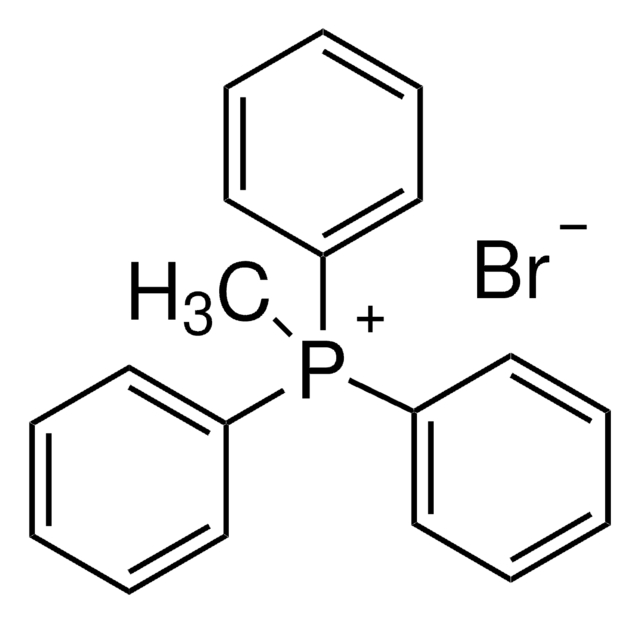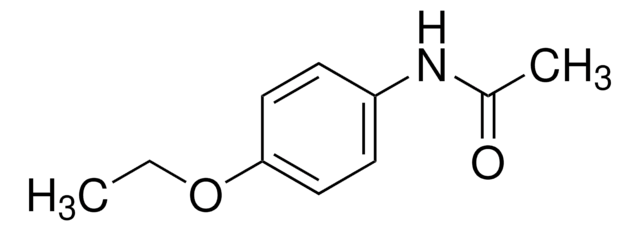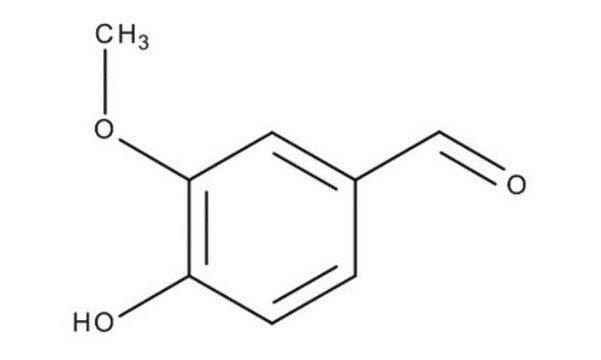Key Documents
77634
Mettler-Toledo Calibration substance ME 51143093, Vanillin
traceable to primary standards (LGC)
Synonim(y):
Vanillin, 4-Hydroxy-3-methoxybenzaldehyde, Vanillic aldehyde
About This Item
Polecane produkty
klasa czystości
analytical standard
Poziom jakości
gęstość pary
5.3 (vs air)
ciśnienie pary
>0.01 mmHg ( 25 °C)
jakość
traceable to primary standards (LGC)
okres trwałości
limited shelf life, expiry date on the label
tw
170 °C/15 mmHg (lit.)
mp
81-83 °C (lit.)
Zastosowanie
food and beverages
pharmaceutical
format
neat
ciąg SMILES
COc1cc(C=O)ccc1O
InChI
1S/C8H8O3/c1-11-8-4-6(5-9)2-3-7(8)10/h2-5,10H,1H3
Klucz InChI
MWOOGOJBHIARFG-UHFFFAOYSA-N
Szukasz podobnych produktów? Odwiedź Przewodnik dotyczący porównywania produktów
Opis ogólny
Mettler-Toledo calibration substance ME 51143093, vanillin is an analytical standard for use in the regular checking of Mettler-Toledo melting point instrument. Its value equals an average of 6 to 12 measurements with a Mettler-Toledo MP90 Excellence instrument that is calibrated against primary standards. The melting point is validated by Capillary method according to European Pharmacopeia (2.2.14.)
Zastosowanie
Cechy i korzyści
- Traceable to a primary standard (LGC, London)
- Melting point evaluation conducted in both thermodynamic and pharmacopeia modes for physically correct and heating rate dependent melting point determinations, respectively
- Provided with certificates of analysis and safety data sheet
- A product of analytical standard grade to help meet the QC/QA requirements of melting point determination
- Standard deviation up to ± 0.2 °C
Polecane produkty
Informacje prawne
Hasło ostrzegawcze
Warning
Zwroty wskazujące rodzaj zagrożenia
Zwroty wskazujące środki ostrożności
Klasyfikacja zagrożeń
Eye Irrit. 2
Kod klasy składowania
11 - Combustible Solids
Klasa zagrożenia wodnego (WGK)
WGK 1
Temperatura zapłonu (°F)
319.6 - 321.4 °F - closed cup
Temperatura zapłonu (°C)
159.8 - 160.8 °C - closed cup
Środki ochrony indywidualnej
dust mask type N95 (US), Eyeshields, Gloves
Wybierz jedną z najnowszych wersji:
Masz już ten produkt?
Dokumenty związane z niedawno zakupionymi produktami zostały zamieszczone w Bibliotece dokumentów.
Klienci oglądali również te produkty
Nasz zespół naukowców ma doświadczenie we wszystkich obszarach badań, w tym w naukach przyrodniczych, materiałoznawstwie, syntezie chemicznej, chromatografii, analityce i wielu innych dziedzinach.
Skontaktuj się z zespołem ds. pomocy technicznej














